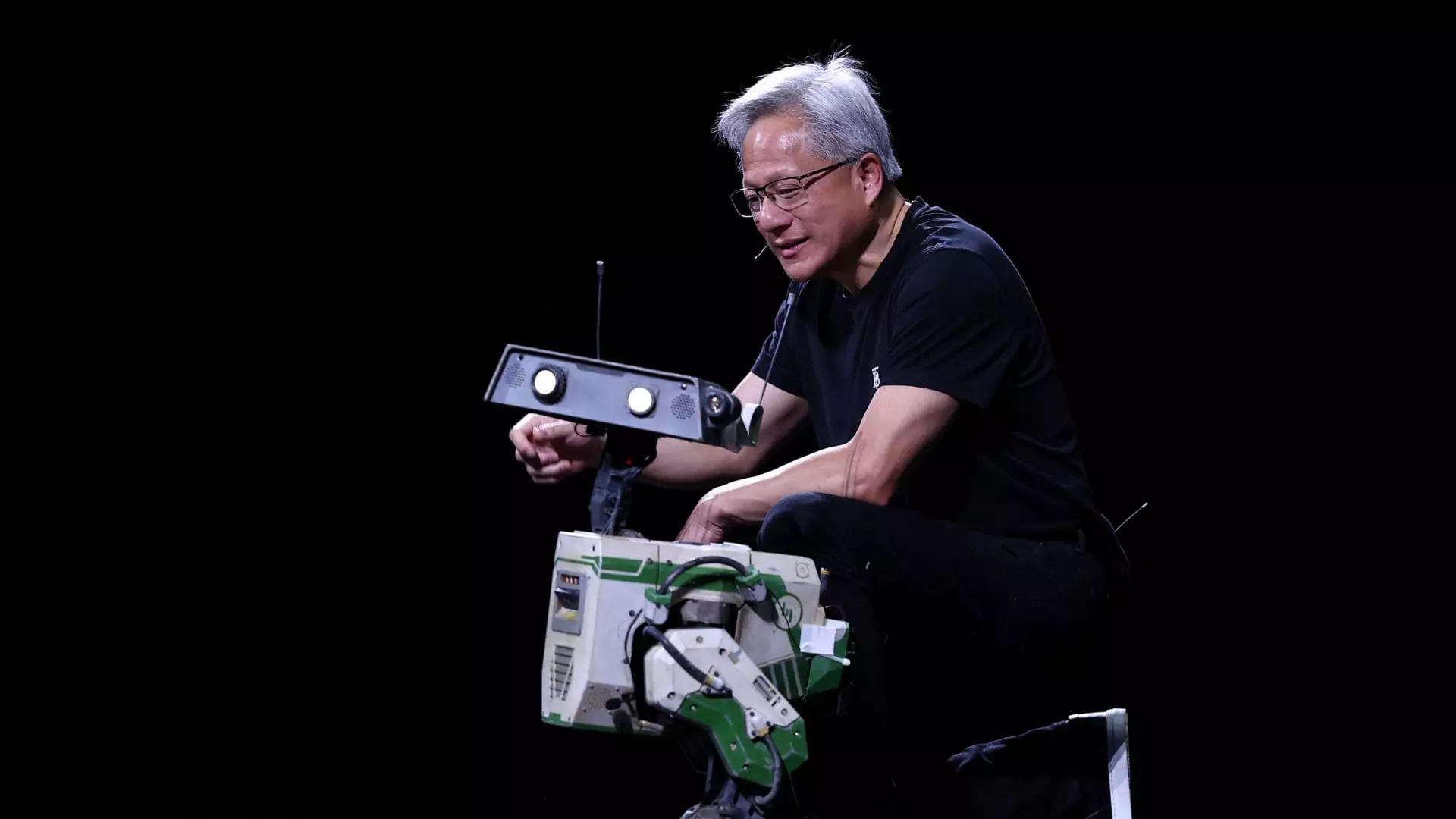Nvidia, a titan in the field of graphics processing units (GPUs), is making waves not solely within the artificial intelligence (AI) arena but also in the relatively nascent domain of robotics. Jensen Huang, CEO of Nvidia, outlined a compelling vision for the company’s future at the recent shareholder meeting, emphasizing that robotics could be just as significant a growth engine as AI itself. This assertion shines a light on an ambitious trajectory for Nvidia, highlighting the transformative potential of their technologies in both sectors.
Huang pointed out that the emergence of self-driving cars represents the first commercial application of robotics expected from Nvidia’s innovations. The implications of this statement extend beyond merely the automotive industry; they could redefine how humanity interacts with machines. According to Huang, the combined growth potential for AI and robotics could scale into the trillions, suggesting a paradigm shift that could alter the landscape of various industries, from transportation to manufacturing.
Nvidia’s Revenue Surge Fuels Innovation
The surge in Nvidia’s revenue is hard to overlook. In just three years, sales have skyrocketed from approximately $27 billion to an anticipated $200 billion this year, reflecting an insatiable appetite for advanced data center GPUs, essential for developing sophisticated AI applications such as ChatGPT. With a market capitalization nudging $3.75 trillion, Nvidia is positioned at the pinnacle of the tech industry, rivaling powerhouses like Microsoft.
The automotive and robotics segment, despite contributing a modest 1% ($567 million) to the company’s overall revenue, showcased an impressive annual growth of 72%. This is indicative of a strategic pivot by Nvidia to invest in sectors poised for rapid expansion. By restructuring how they categorize their automotive and robotics business units, Nvidia is not just positioning itself for the moment but is fundamentally redefining its role as a leader in emerging technologies.
The Road Ahead for Robotics
What the future holds for robotics remains to be seen, but Huang’s vision is grand. He believes that Nvidia is on the cusp of a future where “there will be billions of robots, hundreds of millions of autonomous vehicles, and hundreds of thousands of robotic factories”. This ambitious plan hinges on leveraging Nvidia’s advanced AI chips and software, particularly their Drive platform already in use by automotive giant Mercedes-Benz.
The introduction of AI models for humanoid robots, branded as Cosmos, further solidifies Nvidia’s commitment to exploring the intersection of AI and robotics. These initiatives suggest a shift from a one-dimensional focus on chip manufacturing to a more holistic approach that encompasses software and integrated solutions designed to enhance robotic intelligence. Such advancements could lead us toward a future where robots are not merely tools but autonomous entities capable of making decisions and optimizing processes.
Rebranding and Evolving Focus
Nvidia’s evolution is not merely technical; it is also conceptual. Huang articulated a significant shift in the company’s identity, moving away from being perceived as a mere chip manufacturer. Instead, Nvidia is positioning itself as a comprehensive “AI infrastructure” provider. This transformation recognizes the interconnected nature of various technological components necessary for deploying AI solutions effectively.
By broadening its focus to include complementary technologies like software and networking solutions, Nvidia is preparing to meet the rapidly evolving demands of industries requiring robust AI systems. This strategic pivot is indicative of an understanding that to lead in technology, one must offer comprehensive solutions rather than isolated products. The integration of hardware and software reflects a modern perspective that sees success as contingent upon collaboration between disparate technologies.
Shareholder Confidence and Strategic Decisions
The shareholder meeting also displayed a level of confidence in Nvidia’s direction, evidenced by the approval of the executive compensation plan and the reelection of all board members. These decisions underscore a unified governance structure committed to supporting Huang’s vision and the strategic growth of the company.
Nvidia’s forward-thinking strategies, leveraging both AI and robotics as twin pillars of its future, signal a transformative era not just for the company, but potentially for society as a whole. By addressing both market demands and technological advancements, Nvidia is poised to shape the course of innovation in ways that we are just beginning to grasp. As we stand on the brink of this new age, one can only imagine the myriad ways these technologies will redefine our lives in the coming years.


Leave a Reply